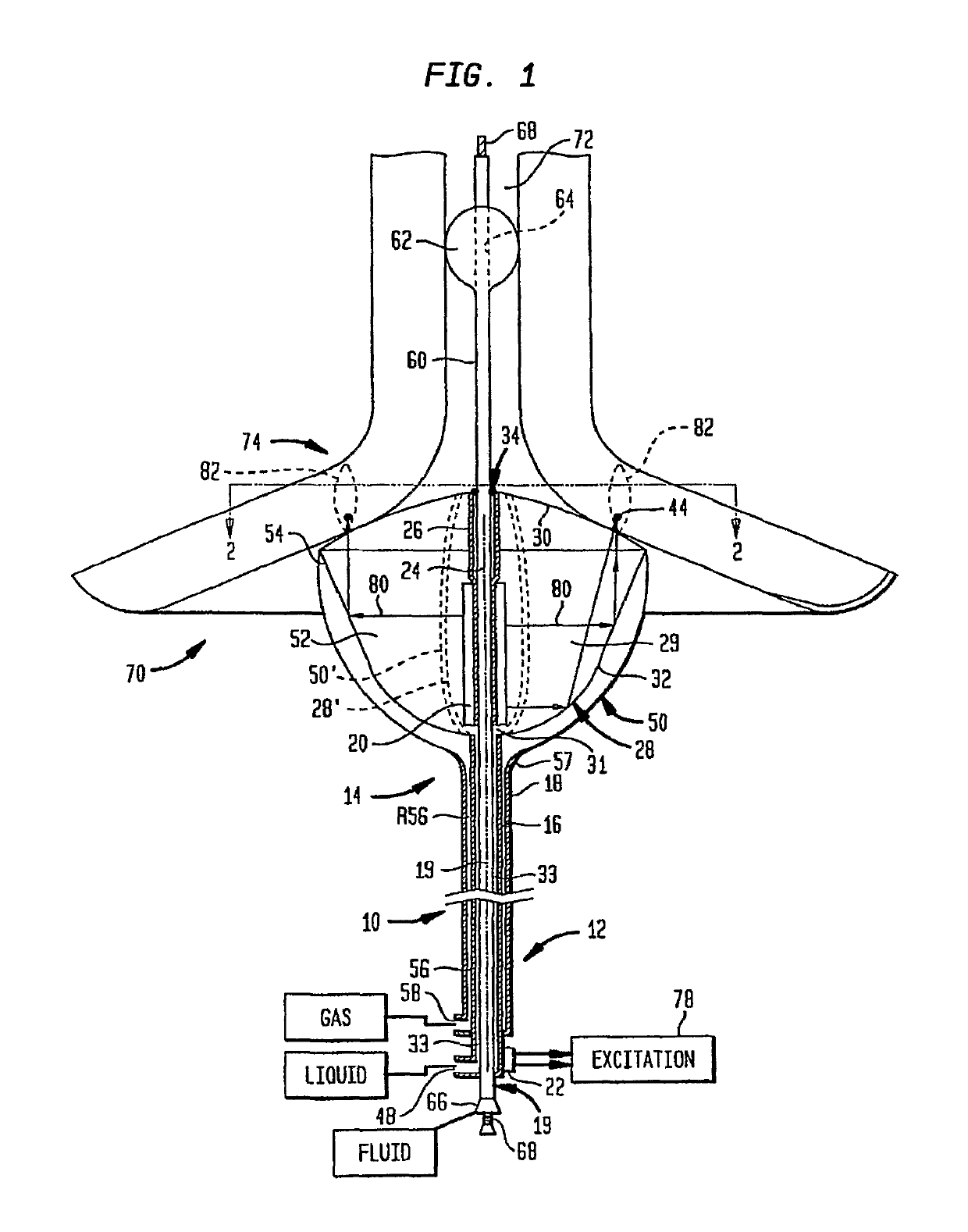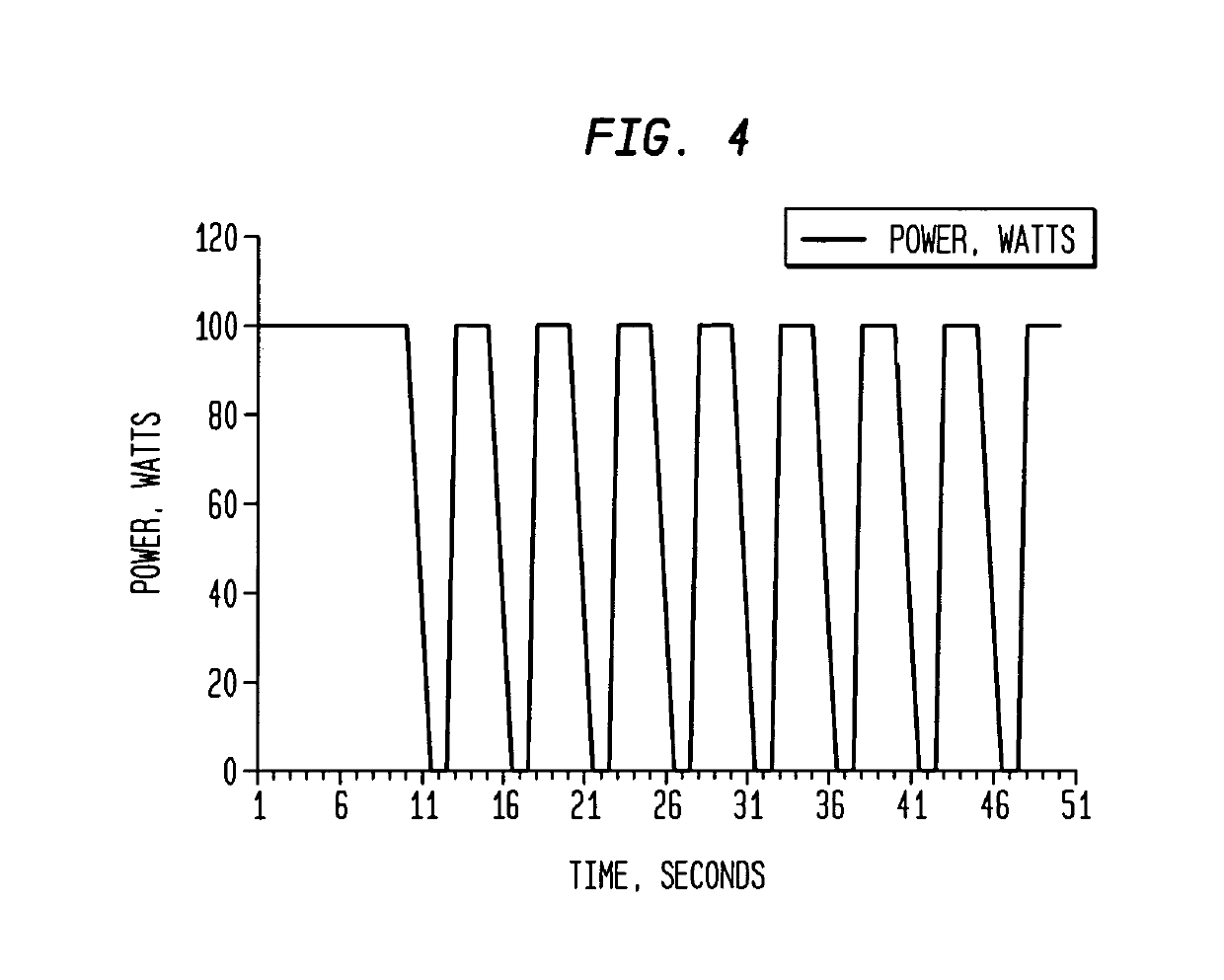Ablation device with optimized input power profile and method of using the same
a power profile and implantable technology, applied in the field of medical procedures, can solve the problems of untargeted collateral tissue necrosis, scars extending along the path, and all the risks and expenses associated with cardiac surgery
- Summary
- Abstract
- Description
- Claims
- Application Information
AI Technical Summary
Benefits of technology
Problems solved by technology
Method used
Image
Examples
Embodiment Construction
[0019]FIG. 1 shows one embodiment of ablation device of the invention. Many more embodiments of ablation device are disclosed in commonly assigned U.S. Pat. No. 6,635,054. Each of these embodiments can be used with the invention described herein. A portion of a probe structure 10 between proximal and distal ends 12 and 14 respectively is omitted in FIG. 1 for clarity of illustration. The probe structure includes a tubular first catheter 16 and a tubular second catheter 18 surrounding first catheter 16.
[0020]First catheter 16 and a cylindrical transducer 20 define a central axis 24 adjacent the distal end of the probe structure. First catheter 16 has a distal tip 26 projecting distally beyond transducer 20. A first balloon 28, also referred to herein as a “structural balloon,” is mounted to first catheter 16 at the distal end thereof. First balloon 28 includes an active wall 32 formed from film which is flexible but which can form a substantially noncompliant balloon structure when i...
PUM
 Login to View More
Login to View More Abstract
Description
Claims
Application Information
 Login to View More
Login to View More - R&D
- Intellectual Property
- Life Sciences
- Materials
- Tech Scout
- Unparalleled Data Quality
- Higher Quality Content
- 60% Fewer Hallucinations
Browse by: Latest US Patents, China's latest patents, Technical Efficacy Thesaurus, Application Domain, Technology Topic, Popular Technical Reports.
© 2025 PatSnap. All rights reserved.Legal|Privacy policy|Modern Slavery Act Transparency Statement|Sitemap|About US| Contact US: help@patsnap.com



